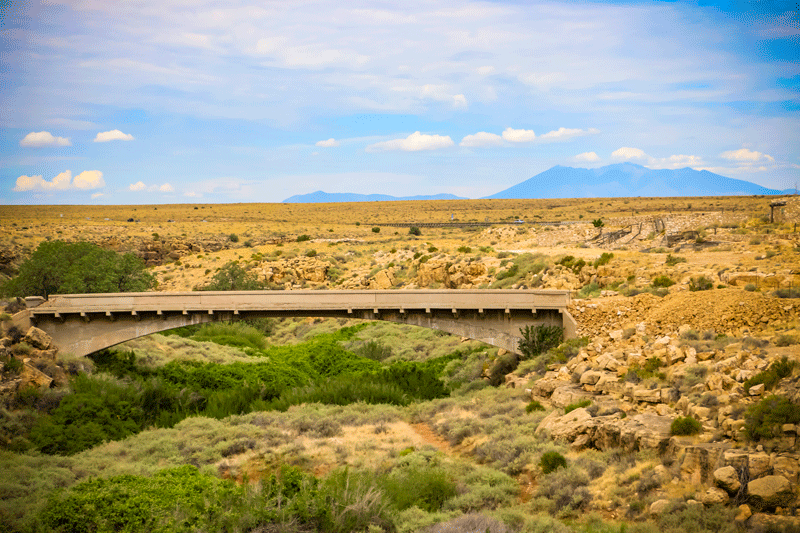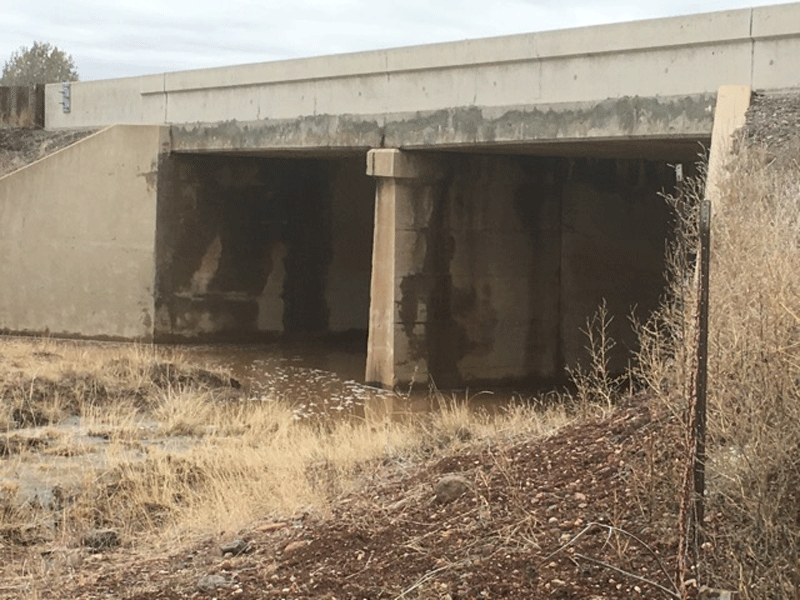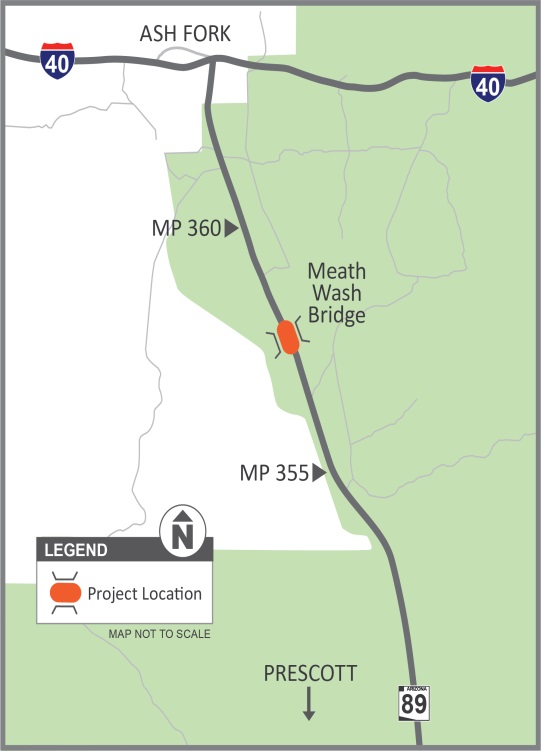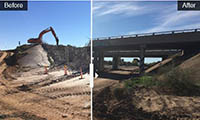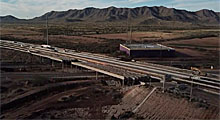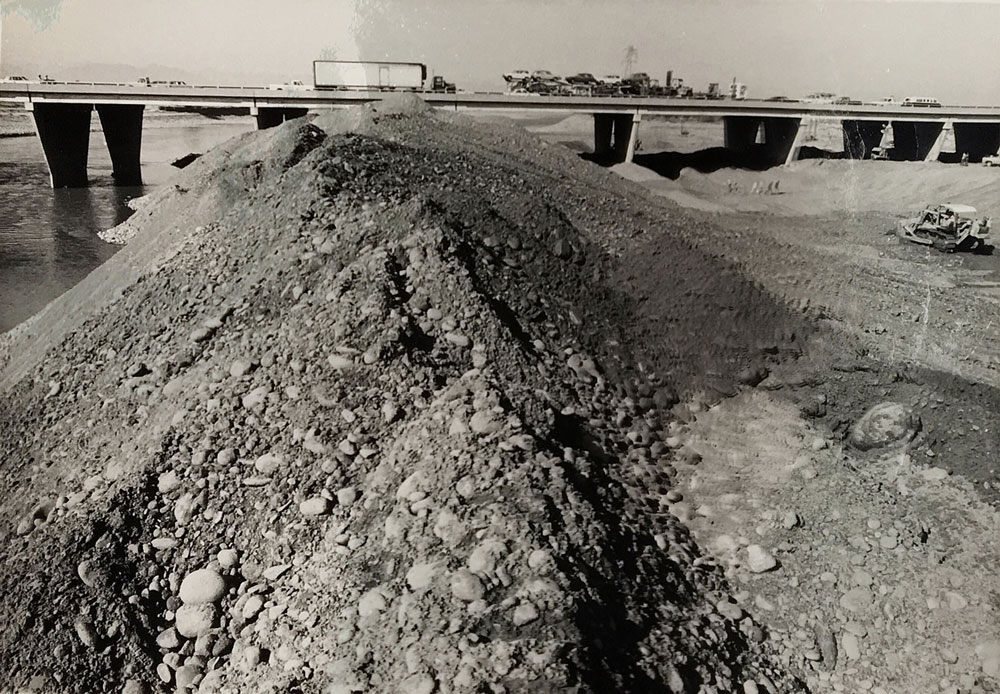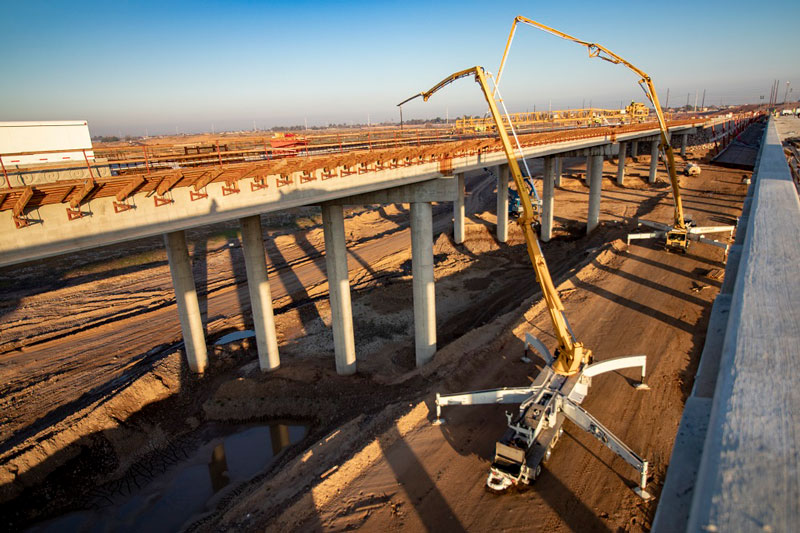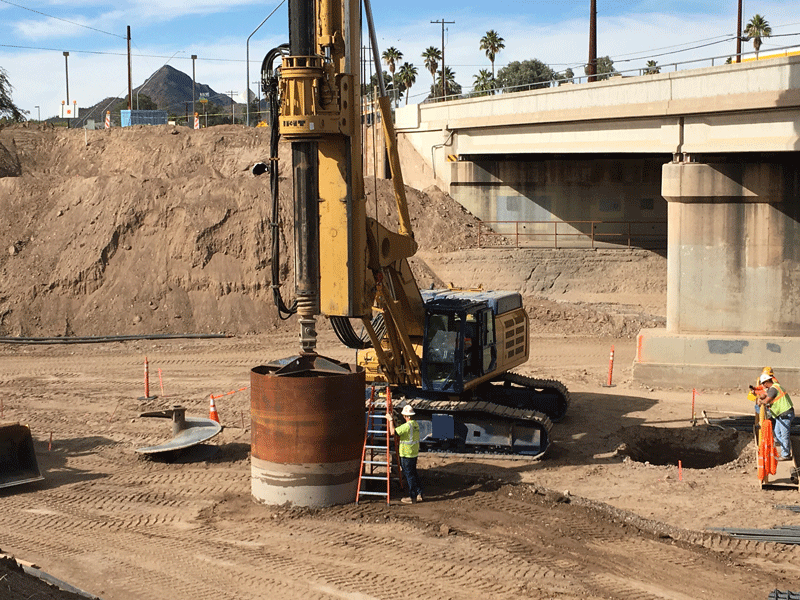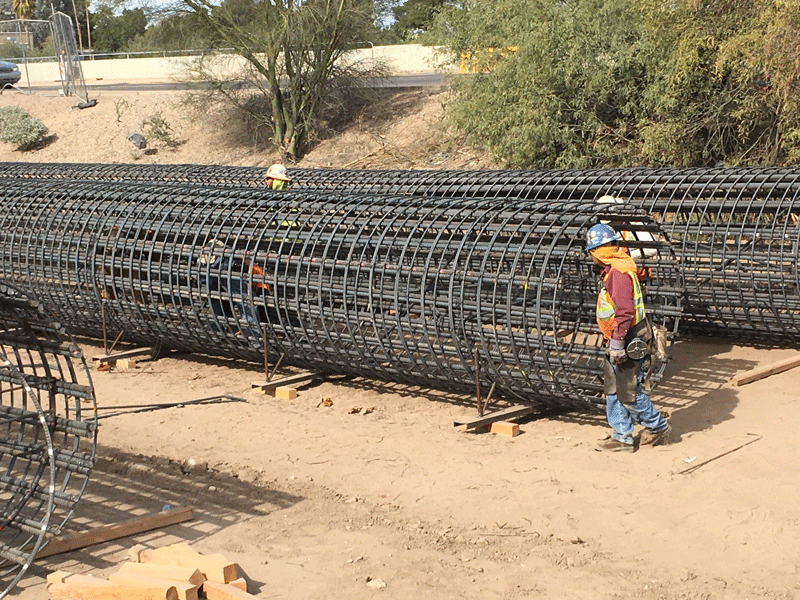Pinnacle Peak Road bridge construction gearing up along I-17
Pinnacle Peak Road bridge construction gearing up along I-17
Pinnacle Peak Road bridge construction gearing up along I-17
Pinnacle Peak Road bridge construction gearing up along I-17
PHOENIX – A new bridge to carry Pinnacle Peak Road traffic over Interstate 17 will start to take shape over the next month as part of improvements coming to north Phoenix.
The Arizona Department of Transportation’s $50 million project is designed to improve traffic flow and safety by rebuilding the I-17 older interchanges at both Pinnacle Peak and Happy Valley roads.
In addition to building bridge abutment walls, crews this month will pour concrete for two 19-foot-tall pier columns along the center median of I-17 at Pinnacle Peak Road. The columns will help support the steel-reinforced concrete girders that will hold the Pinnacle Peak bridge deck. Crews are scheduled to place girders in mid-May.
Overnight lane restrictions are scheduled along Pinnacle Peak Road near I-17 the next two weeks for the bridge work. Eastbound Pinnacle Peak Road will be narrowed to one lane at the I-17 interchange from 10 p.m. to 5 a.m. Wednesday and Thursday nights (April 17-18) this week. The same restriction is scheduled Monday through Thursday nights next week (April 22-25).
Drivers also can expect construction work to ramp up near I-17 and Happy Valley Road, where crews are building a diverging diamond interchange to replace the existing two-lane bridge and roundabouts.
The bridge work, including girder placement, will require more than a dozen full closures of I-17 in the project area between May and November, with many of them scheduled during overnight hours and on weekends. Specific information about restrictions and detour routes will be provided in advance of any closures.
Since the project started in November 2018, crews have focused on utility relocations, soil stabilization and building up embankments at both of the adjacent interchanges. An upgraded drainage culvert beneath Pinnacle Peak Road east of I-17 also has been completed.
The I-17/Happy Valley and Pinnacle Peak interchanges project is scheduled for completion in fall 2020. More information is available at azdot.gov/I17TrafficInterchanges.

